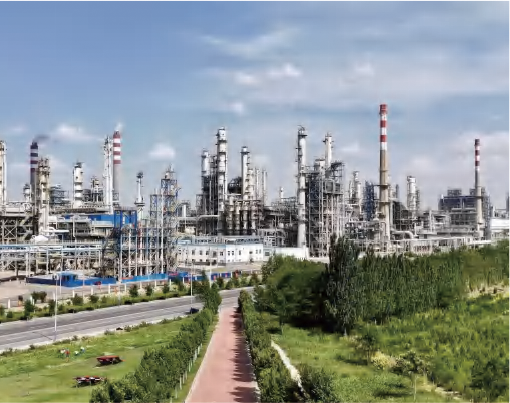Silica sol for petroleum and coal chemical catalysts
#Application ·2025-08-21 17:10:36

Silica sol specifically designed for petroleum and coal chemical catalysts is a high-performance catalyst carrier and additive widely used in the petrochemical and coal chemical industries. The following is a detailed introduction to it
- Characteristics
- High specific surface area: The specific surface area of silica sol is relatively large, usually reaching 100-600 square meters per gram. A larger specific surface area can provide more active sites, which is conducive to the loading and dispersion of active components, thereby enhancing the activity of the catalyst.
- Appropriate particle size distribution: The particle size of its silica particles is usually between 1 and 100 nanometers. The smaller and uniformly distributed particle size helps to better disperse the active components in the catalyst, making the catalytic reaction proceed more uniformly and efficiently.
- Good thermal stability: It has excellent thermal stability. The conventional operating temperature can be below 900℃, and after special modification, it can reach 1200℃. It can maintain structural stability in the high-temperature environment of the petroleum and coal chemical production process, ensuring the stable performance of the catalyst.
- Strong chemical stability: Silica sol has the characteristics of acid and alkali resistance, and can remain stable in various complex chemical environments in the catalytic reactions of petroleum and coal chemical industries. It is not easy to undergo chemical reactions with other substances, ensuring the service life of the catalyst.
- High surface activity: The surface of silica sol particles is rich in hydroxyl groups, which can be chemically modified to introduce specific functional groups such as amino and thiol groups, enhancing the anchoring ability of active components. It can also form a hydrogen bond network with molecular sieve crystals, achieving effective connection between grains through the sol-gel process.
- Its role in the fields of petroleum and coal chemical engineering
- As a catalyst carrier: Silica sol can support various metal or metal oxide catalysts, such as platinum (Pt), palladium (Pd), nickel (Ni), zinc oxide (ZnO), etc. Its porous structure can effectively disperse the active components, reduce agglomeration, highly disperse the active components on its surface, and improve the utilization rate of catalytic active sites.
- Improving the mechanical strength of catalysts: Silica sol can be used as an additive to bond various components of the catalyst together, enhancing the mechanical strength of the catalyst, preventing its breakage and wear during the petroleum and coal chemical production processes, and facilitating the maintenance of the catalyst's stability and service life.
- Regulating the pore structure of the catalyst: By adjusting the addition amount of silica sol, the continuous regulation of mesoporous volume can be achieved, forming a two-stage pore structure, etc., which can enhance the diffusion efficiency of the catalyst in the reaction. For instance, in the hydrogenation treatment of diesel, the conversion rate of sulfides can be increased.
- Participating in the formation of active components: By doping elements such as aluminum (Al) and titanium (Ti), silica sol can form silicoaluminate or silicotitanate, generating strong acidic sites, which are used in reactions such as petroleum cracking and isomerization, and can replace traditional liquid acids, reducing pollution.
- Preparation method
- Ion exchange method: Using water glass as raw material, impurities such as sodium ions are removed through ion exchange resin, and then through concentration, pH value adjustment and other process steps, silica sol is obtained.
- Acid neutralization method: Mix soluble silicate solution with acid in a certain proportion, and carry out neutralization reaction under appropriate temperature and stirring conditions to form silica sol. Then, after aging, filtration, washing and other post-treatment processes, pure silica sol is obtained.
- Gelation method: Freshly prepared silica gel is treated with a dilute alkali solution or other gelation solvent to re-disperse the gel particles in the solution, forming silica sol. The particle size distribution of the silica sol prepared by this method is relatively narrow, but it has high requirements for raw materials and process conditions.
Tags:





